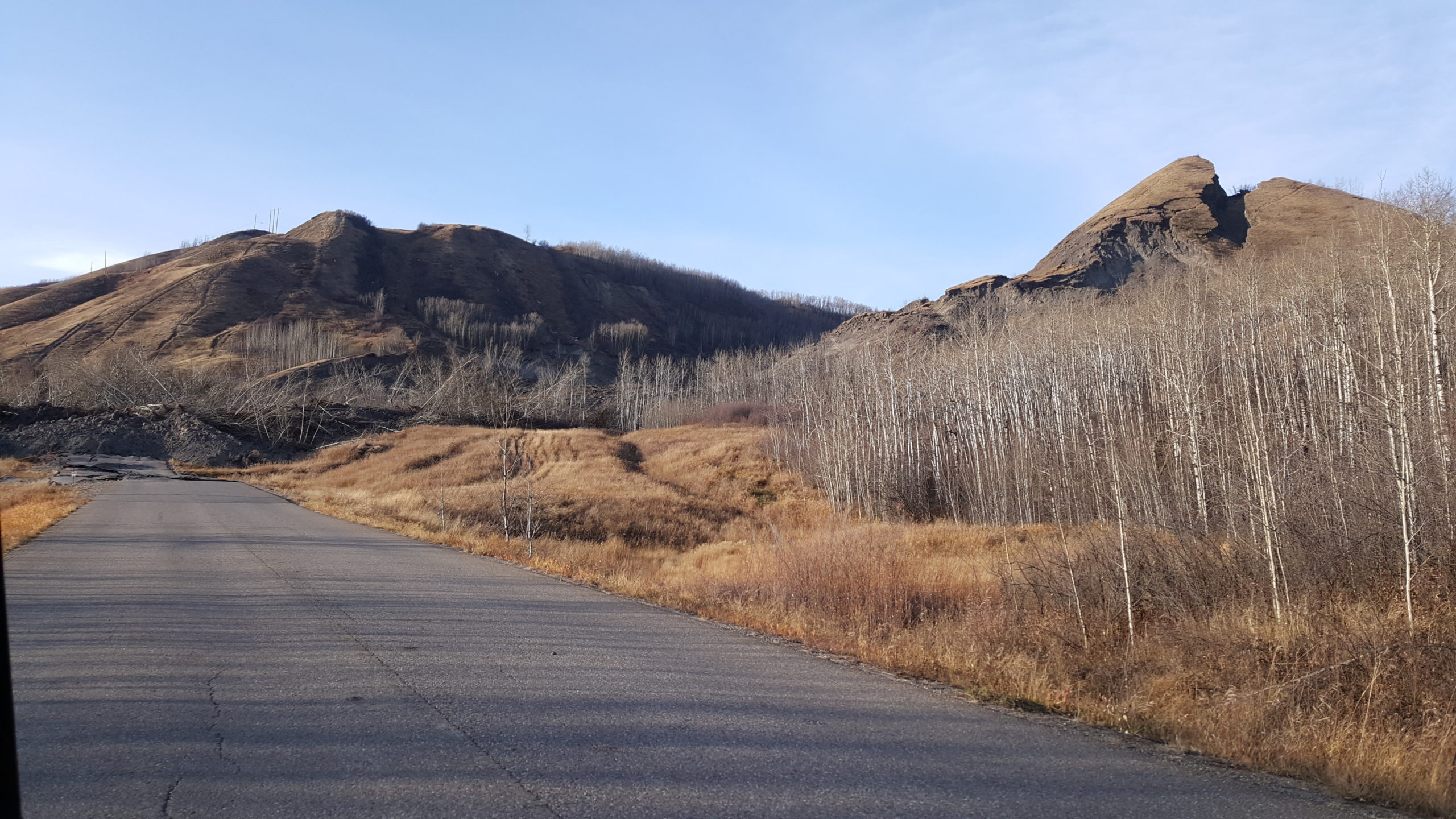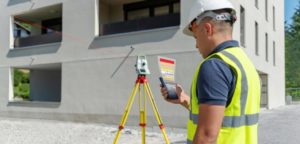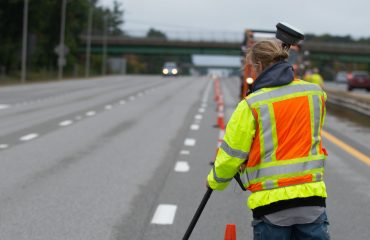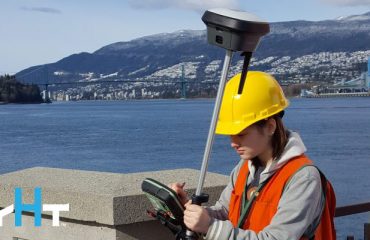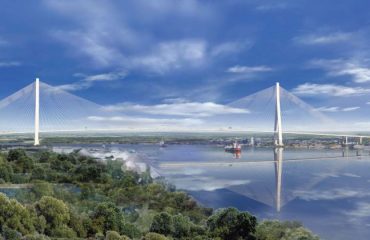An innovative GNSS-based monitoring system provides assurance that a landslide has stabilized and sets a new standard for risk assessment and mediation.
On September 30, 2018, the 200 or so residents of British Columbia’s Old Fort (not far from Fort St. John) were shocked by the roar of a landslide occurring a couple of miles outside of town, as 8 million cubic meters (10.5 million cubic yards) of dirt, rock and big boulders swept down about 1,000 meters (0.6 miles) from a gravel pit to Peace River wetlands, laying waste to everything in their path, including trees, utilities, and—of most concern to residents—about 600 meters (2,000 feet) of the Old Fort Road, the only access for residents. It was a roar heard around the nation, making the evening news and drawing the nearly immediate attention of the B.C. Ministry of Transportation and Infrastructure.
The safety of residents trapped in Old Fort was the most pressing concern. As the ministry mobilized to investigate, the news wasn’t good. Early site inspections indicated that the landslide was a significant natural hazard that would require a multiyear timeframe to mitigate. Local geologists from Westrek Geotechnical Services were soon able to confirm that the slide was “caused by a failure in the bedrock at the head of the landslide, where a gravel quarry had been operating on the hillside above Old Fort,” and that the ground beneath the slide had been moving for months before the massive collapse.
“The lidar work was essential in the immediate aftermath of the landslide, and that early data was extremely helpful. But we knew it wasn’t the kind of monitoring we would need to determine when the slide stabilized, and when it would be safe to build a temporary road and restore utilities.”
– B.C. Ministry Geomatics Survey Supervisor Sean MacIsaac
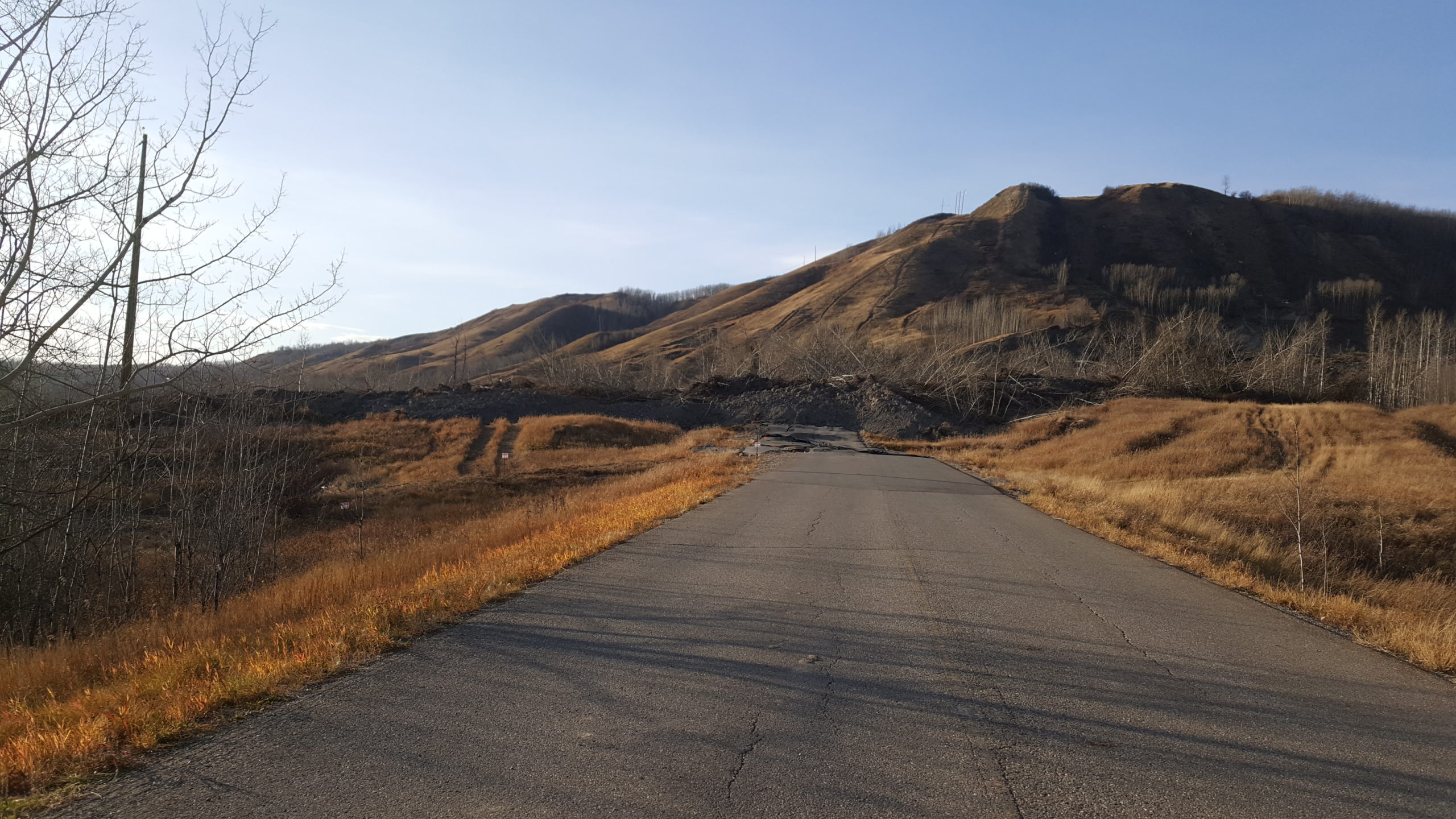
Nor did that massive collapse signal the end of the landslide’s downward march. Though it had released a massive amount of stored up energy, the failure was still happening. Three days after the collapse, additional displacements of 20 meters were measured. In the following days, displacements of 4 to 50 meters were common. These early measurements were so alarming that B.C.’s Public Safety Minister Mike Farnworth took the prudent but controversial step of evacuating the entire town on October 7th, a move that affected 54 homes and about 200 residents.
It was a trying and stressful time for everyone involved. Given the size and ongoing downward translation of the landslide, no one at the ministry could say when, or even if, Old Fort Road would be rebuilt (evacuations of people and belongings took place by emergency barge and helicopter from the adjacent Peace River), nor could the ministry be certain that the town itself would be spared. Some residents were worried they might never be able to move back into their houses.
Complex Monitoring, Done Just Right
Monitoring of the landslide began within days, as ministry personnel quickly implemented daily overflights with lidar equipment. This was an effective and safe first step to provide accurate data that covered the several-acre slide area. Aerial overflights also kept workers off the slide in the earliest and most dangerous days following the initial collapse.
But lidar overflights were unsustainable for long-term monitoring because the daily flights were prohibitively expensive. Additionally, the lidar work could only record data every 24 hours and would never be able to provide the real-time information on movement rates that is used to automatically alert workers on the landslide of rapidly increasing movement that might signal another collapse event. “The lidar work was essential in the immediate aftermath of the landslide, and that early data was extremely helpful,” says Ministry Geomatics Survey Supervisor Sean MacIsaac. “But we knew it wasn’t the kind of monitoring we would need to determine when the slide stabilized, and when it would be safe to build a temporary road and restore utilities.”
The team reached out to David Rutledge, Leica Geosystems’ director of structural monitoring, as well as measurement solutions provider Spatial Technologies, to design and install a GNSS-based monitoring system within two weeks of the landslide, start to finish.
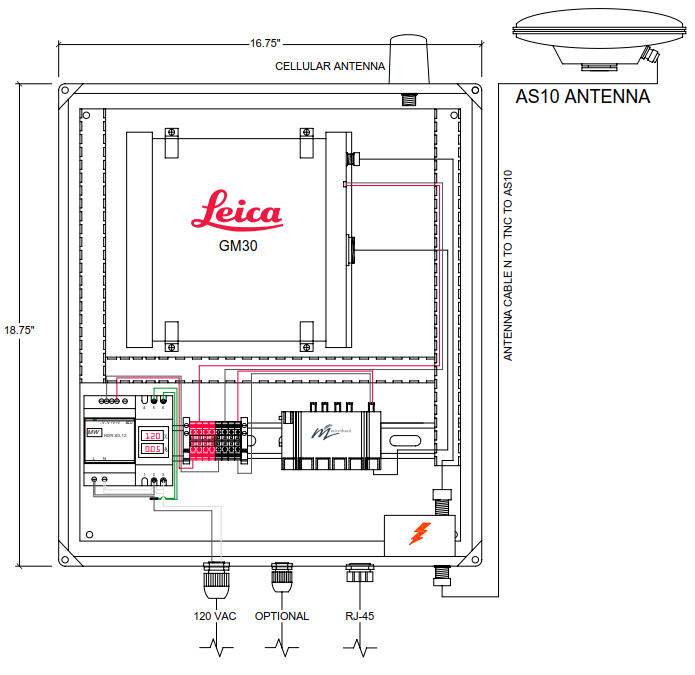
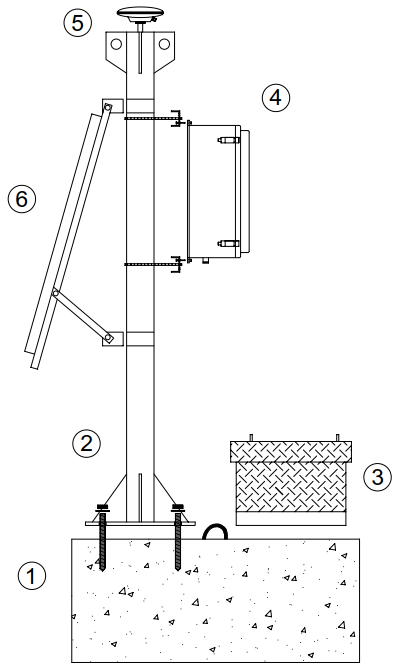
Rutledge, who is based in California and British Columbia, made himself available immediately for what proved to be one of the most urgent and complex of the many monitoring projects he’s been involved with over his career. “Designing a system that would reliably—and cost-effectively—measure the precise displacements in real-time was the challenge. We needed a system that could track the slide in three dimensions at the millimeter level around the clock. This was required to understand the mechanics of the slide and to ensure that we were not putting anyone in harm’s way,” Rutledge said. “Sean and his team really understand risk and were open to several innovations that made this solution possible.”
For his part. MacIsaac says, “My survey team has been standardized on Leica Geosystems equipment for a long time now. Given the high stakes of the situation, we were confident in Leica’s tried and tested approach.”
The monitoring solution consisted of four major components:
- Custom GNSS monuments that were designed by Leica Geosystems to be moved by helicopter onto the active slide area
- Leica GM30 monitoring receivers that track the GPS constellation and the GLONASS constellation
- A Leica Geosystems designed communication system with three-way failover capability for the highest reliability.
- A custom implementation of the Leica GeoMoS Now! online analysis software for continuous real-time monitoring of landslide movement.
Really Stable Monuments… That Move!
From a surveyor’s perspective, placing GNSS sensors on an actively moving landslide was an interesting undertaking. The innovative, first-of-its-kind monument design that Rutledge and MacIsaac devised, built, and installed is likely to be influential in landslide monitoring projects for years to come.
In order to operate continuously and without electrical grid power, the GM30 receivers required a robust DC power system based around solar energy. This consisted of an appropriately sized solar panel and a battery array capable of providing power in any weather. To keep the entire system “bottom heavy” and resistant to wind toppling, Leica Geosystems designed a minimally expanding concrete cylinder base that weighed well over 1,700 pounds, giving the entire installed assembly a weight of over a ton.
“The alternative to a system like this would have required getting a drill rig on site to place a deep foundation,” says Rutledge. “But that would have quadrupled costs and likely wouldn’t have been a better solution. We match our monumentation with the expected displacement signal, an often-overlooked aspect of measurement science. The design and special concrete mix meant that we could fabricate everything up near the site in just a couple of days. We felt that we had found a good way to mount the GM30s that worked with the particular conditions in Old Fort, and their performance since then has proved us correct. We now track the slide in the low millimeter range.”
“System uptime is very important to us and is a big differentiator for our monitoring solutions. The Leica GM30s have internal memory that can be partitioned so that part of it operates on a first-in first-out basis. That means that even if there is a communication failure, or if the ministry’s server goes down, all of the data collected at that site is available from this partition for a year or so. We automatically retrieve it and process it once the system is back online.”
– Leica Geosystems Director of Structural
Monitoring David Rutledge
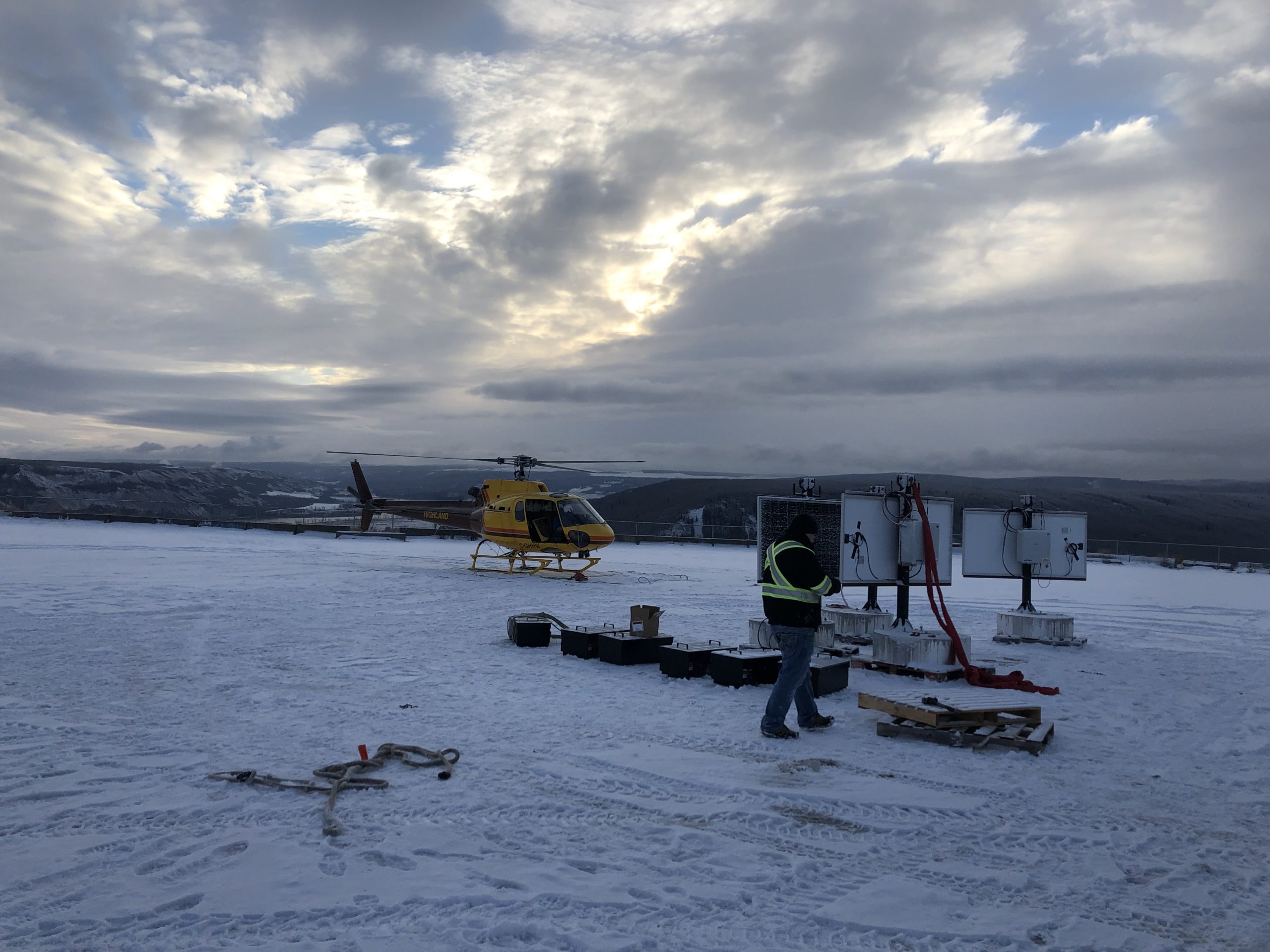
One problem remained: How does one install these GNSS stations on terrain that is known to be dangerously unstable? In a word, helicopters—the initial six concrete bases with mounting brackets, the battery packs and solar arrays, and of course the GM30s were staged at a restricted area near the landslide and then, over the course of one day, lifted and lowered to sites spread out strategically over the landslide (aside from one receiver installed away from the landslide and used as a base station). “In most cases, the sensors were placed on spots that surveyors could walk to safely and then do the necessary assembly on the bases and components as they were lowered in by helicopter,” MacIsaac explains. “But we did place a few in spots where there was no reasonable access by foot, and in those cases we went ahead and lowered in the surveyor too—an unusually exciting day of fieldwork for our team!”
With the initial six sensors in place, displacement data were immediately available. The lidar flights continued for a couple more days, “Just to provide a check on the GNSS data and help us gain trust in the equipment,” says MacIsaac. “The two sets of data matched very well.” The real-time processing of the GNSS data is done by Leica Spider software, and these data are then displayed by GeoMoS Now!, a cloud-based analysis tool. MacIsaac defined the displacement thresholds used to automatically generate alert messages that are relied upon by BC MOT and other entities that must safely interact with the slide area and provide guidance to the local homeowners and to the traveling public.
The Leica Geosystems monitoring system has been in place for more than a year and has provided an uninterrupted record of displacements form the slide (and at the low millimeter level), supporting the ministry’s decision to use Leica Geosystems’s expertise, equipment, and software for this demanding task.
“System uptime is very important to us and is a big differentiator for our monitoring solutions,” says Rutledge. “Our GM30s have internal memory that can be partitioned so that part of it operates on a first-in first-out basis. That means that even if there is a communication failure, or if the ministry’s server goes down, all of the data collected at that site is available from this partition for a year or so. We automatically retrieve it and process it once the system is back online.”
A month after the monitoring system was in place, MacIsaac and the MOT geotechnical team concluded that the landslide had stabilized, based upon the GNSS data, and gave the go-ahead to rebuild the Old Fort Road, restore utility service, and end the evacuation order.
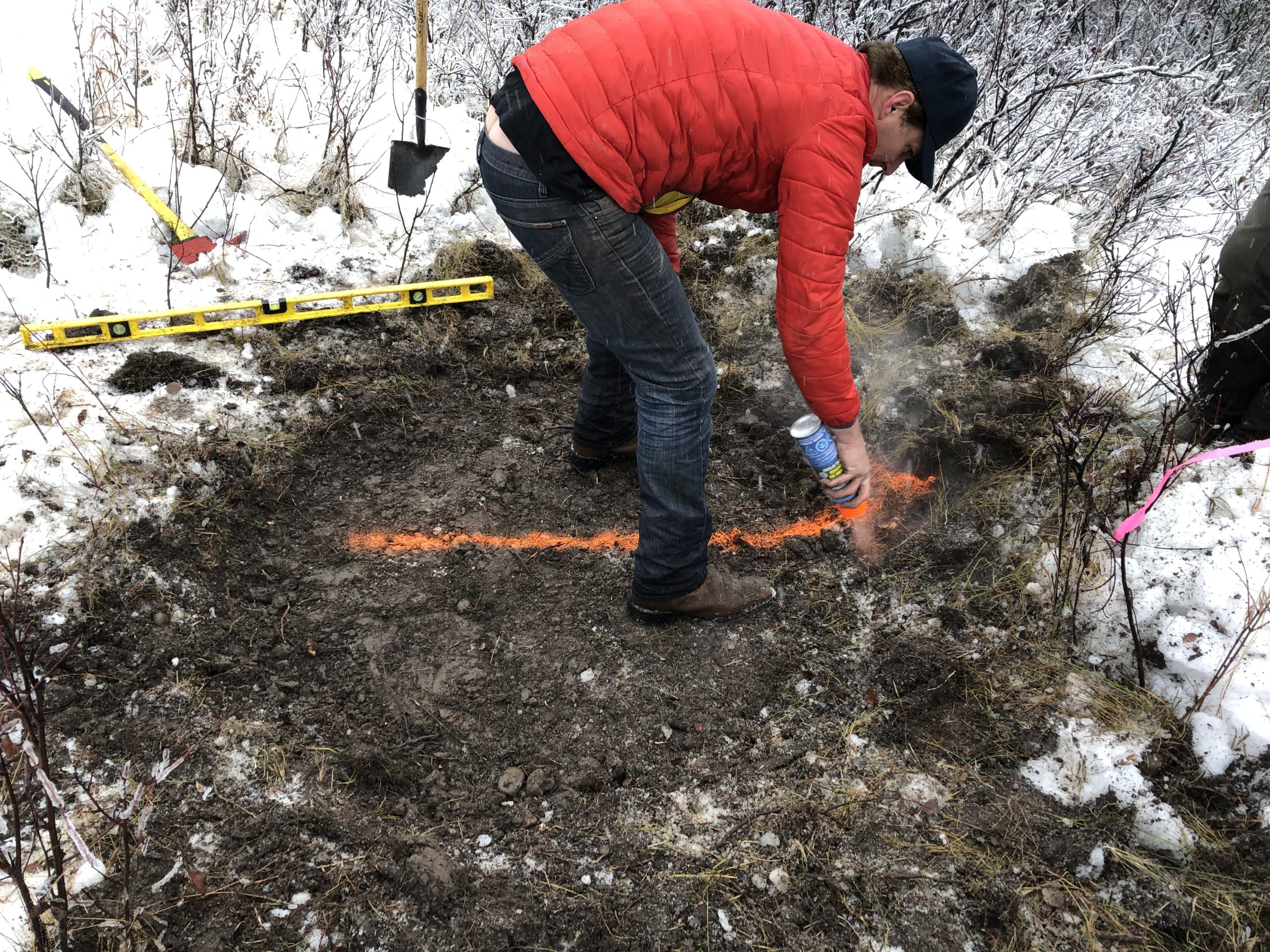
A Stressful System Test
On November 29, 2018, just a few days after residents began to return home, a 4.5 magnitude earthquake was felt over the Peace River region and was particularly noticeable in Old Fort—the earthquake’s epicenter was less than 20 kilometers from the still-recovering town. Residents across Northeast B.C. reported strong tremors that rattled homes and businesses for several seconds. That kind of seismic activity worries anyone who feels it, but Old Fort residents were understandably more alarmed than most. Had the earthquake triggered a new, massive landslide event? One that could easily destroy the newly restored access to their little community, forcing another evacuation?
“It was a surprise, for sure,” says MacIsaac. “We don’t have a lot of earthquake activity around here. Of course, my first thought was to check on the landslide.” Rutledge, who was in the area, was also concerned. Since the Leica Geosystems monitoring system had been collecting data for some time now, he and MacIsaac were able to log into the GeoMoS Now! website and see what if any displacements it might have triggered. “We looked at it and could verify right away that there was no displacement at all, which was pretty amazing,” says MacIsaac. “The ministry was able to call town officials immediately and tell them with confidence that their access was unaffected.”
It was a big win for the ministry and a “a triumph of risk management,” as Rutledge put it. “Landsides are not unusual around here, and we already have other candidates for long-term monitoring projects,” MacIsaac explains. “Slide remediation and assessment can take a long time, and with what we’ve learned in Old Fort, and with the equipment we’ve assembled, we will be able to respond much more quickly and efficiently.”
Note: This article was also published in the April 2020 issue of Civil + Structural Engineer.
To talk to one of our experts and learn more about solutions for surveying and monitoring, please contact us.
